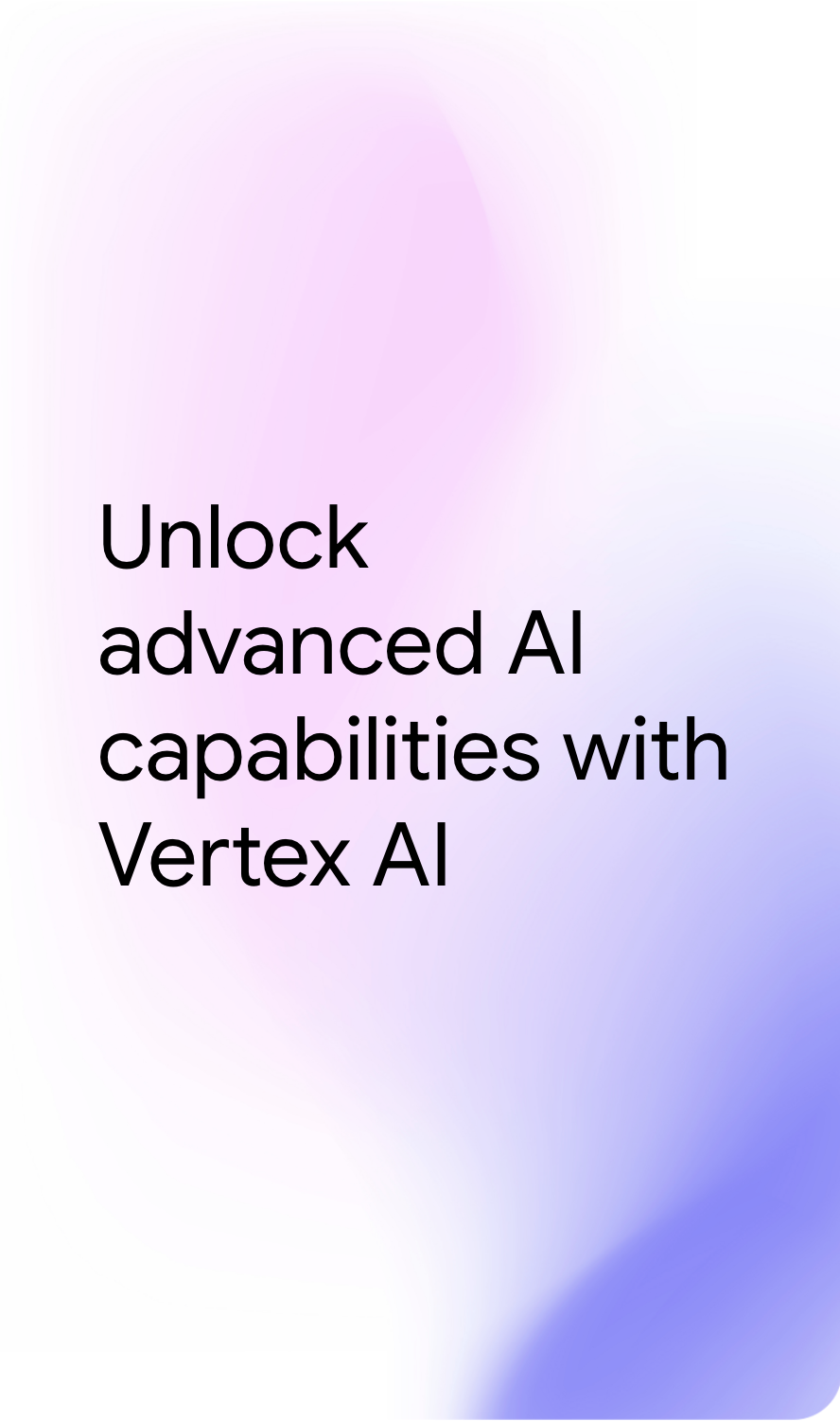Overview of Generative AI on Vertex AI
Build production-ready generative AI agents and applications using Vertex AI using Google's advanced models and infrastructure.

-
Build, deploy, and connect agents
Build agents with an open approach and deploy them with enterprise-grade controls. Connect agents across your enterprise ecosystem. -
Enterprise ready
Deploy your generative AI agents and applications at scale with enterprise-grade security, data residency and privacy, access transparency, and low latency. -
State-of-the-art features
Expand the capabilities of your applications by using the 2 million token context window that Gemini supports, and the built-in multimodality and thinking capabilities from Gemini 2.5 models. -
Open and flexible platform
Vertex AI Model Garden provides a library of over 200 enterprise-ready models and Vertex AI Model Builder helps you test, customize, deploy, and monitor Google proprietary and select third-party models, including Anthropic's Claude 3.7 Sonnet, Meta's Llama 4, Mistral's AI Mixtral 8x7B, and AI21 Labs's Jamba 1.5.
Get started
Generate text using the Gemini API in Vertex AI
Use the Gen AI SDK to send requests to the Gemini API in Vertex AI
Browse the Vertex AI Studio Prompt Gallery
Test out prompts with no setup required
Generate images and verify watermarks using Imagen
Create a watermarked image using Imagen on Vertex AI
Featured capabilities
Agent Builder
A suite of features for building and deploying AI agents
Live API
Use the Live API to provide your end users with the experience of natural, human-like voice conversations
Thinking
Solve complex requests and show the model's thought process behind its response using Gemini's built-in reasoning capabilities
Grounding
Ground your responses using Google Search, Maps, or even your own data
Generate embeddings
Generate embeddings to perform tasks such as search, classification, clustering, and outlier detection
Tuning
Adapt your model to perform specific tasks with greater precision and accuracy
Image generation
Build next-generation AI products that transform your user's imagination into high quality visual assets using AI generation in seconds
Video generation
Use Veo on Vertex AI to generate new videos from a text prompt or an image prompt
Generative AI evaluation service
Vertex AI lets you evaluate any generative model or application and benchmark the evaluation results against your own judgment, using your own evaluation criteria
Build using the SDK
Run example Jupyter notebooks
Explore various Gemini use cases with our example Jupyter notebooks
Best practices for prompt design
Learn how to design prompts to improve the quality of your responses from the model









